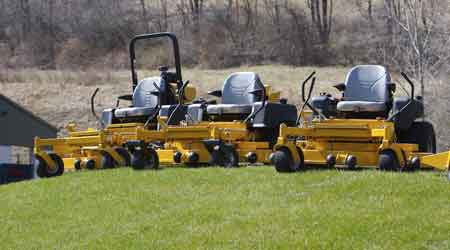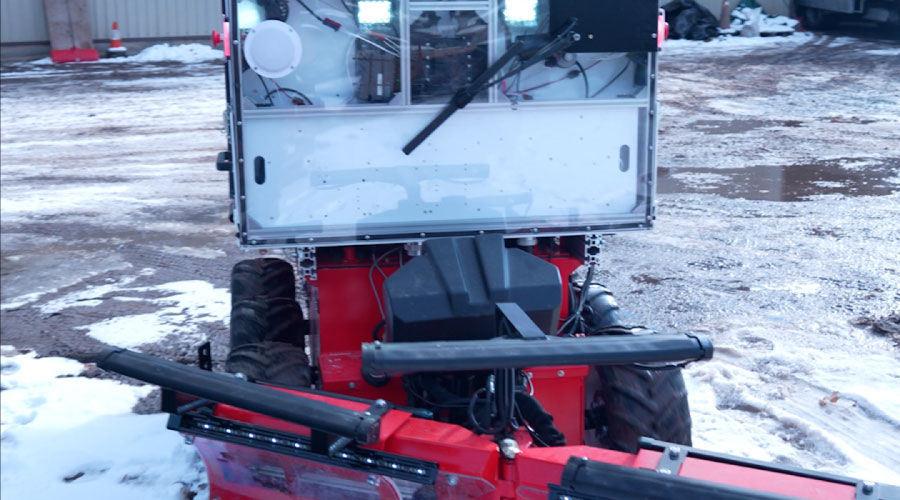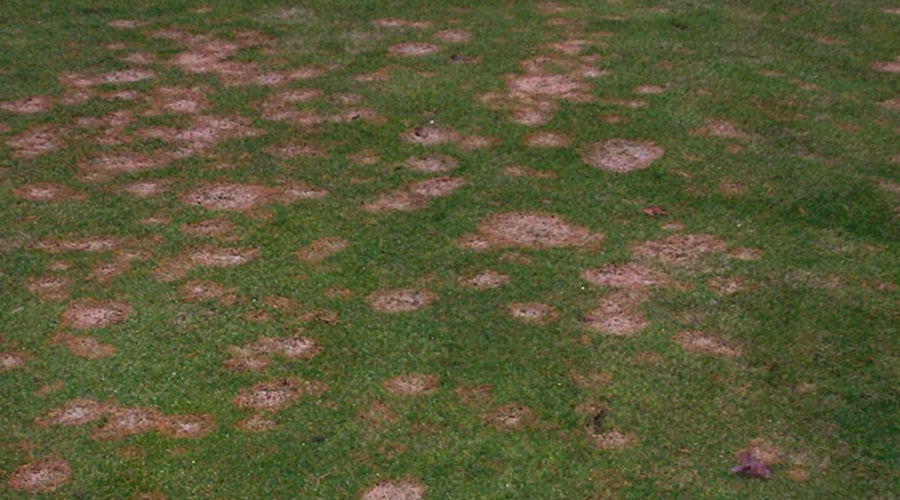Attachments Help Mower Models Increase Versatility
Part 3 of a 3-part article on mowers
Thanks to a greater selection of attachments for mowers, as well as for utility vehicles and tractors, grounds crews can more effectively address a range of tasks that only require occasional attention.
To determine the specific attachments that will best support crews and fit into department budgets, managers need to consider the property’s location, terrain, and weather. For example, in regions that experience above-average snowfall, managers can consider buying saltboxes, snow blowers, salt spreaders, and snow blades for their departments’ mowers, tractors and trucks.
The same reasoning holds true for landscapes that only need to prune a few times a year. Buying a combination unit that serves as a pruning saw and a hedge trimmer is a proven strategy for grooming both tall and short bushes and trees without investing in two different pieces of equipment. Managers also can buy attachments for string trimming, edging and blowing.
The landscape’s size also will factor into a manager’s decision on attachments. Departments responsible for large campuses need more accessories to maintain the overall appearance, while the smaller properties do not need as many.
To ensure a particular attachment actually performs as intended, managers and crews should schedule a manufacturer or dealer demonstration of the product before purchasing it. By field-testing it, they also can see if the attachment fits on their current piece of equipment. This step is extremely important when the purchase is not directly from the manufacturer.
Certain attachments fit differently and have their own mechanical makeup, so it is essential to test all of them beforehand. Ensuring the user-friendliness of the attachment is also a key part of the specification process. Even if an attachment fits, it might not attach or detach easily, thereby decreasing operator productivity.
When ordering an attachment online, managers need to make sure all parts are included. It is not uncommon for managers to order attachments — brooms, sprayers, blowers, and aerators, for example — in bulk before the season begins and store them for later use.
Unfortunately, this strategy can increase the chances the attachment is not what they expected, does not fit with their equipment, or is missing parts. To mitigate this risk, managers must make sure they have everything they need upon delivery.
Managers can devote a great deal of time and energy to researching and specifying attachments for mowers, tractors and utility vehicles. But before making a final decision, it is important to carefully consider department needs.
For example, if a department uses a mower to carry out landscaping duties but also to periodically provide such services as slit seeding, aeration, pest control, leaf and debris removal, and snow and ice management, it makes more sense to buy specific attachments for each task, rather than buying a separate piece of equipment for each task.
Financially speaking, investing in one large purchase, such as a mower or utility vehicle rather than buying three or four smaller pieces of equipment will save money in both the short and long terms. From an efficiency standpoint, equipment is not meant to sit idle for long periods, so if crews use select pieces of equipment just a few times a year, the chances of mechanical problems occurring actually increase. This is the point at which the value of investing in attachments rather than additional motorized pieces of equipment comes into play.
Most manufacturers of grounds equipment provide an array of attachments for their units. While mowers are the most common and expensive purchases among grounds departments, managers can use attachments up and down the range of equipment. The selection of attachments varies from large pieces of equipment to mid-size and small pieces, such as handheld tools.
While mower and utility vehicle manufacturers have their own attachments, purchasing from a manufacturer of grounds attachments has become an increasingly popular option. These companies not only provide a selection of attachments for out-front mowers, but their attachments are also designed to fit with a variety of major manufacturers.
Mike Fitzpatrick is vice president of U.S. Lawns — www.uslawns.com — which has about 260 franchise locations nationwide. He has more than 30 years of experience in the green industry.
Related Topics:















